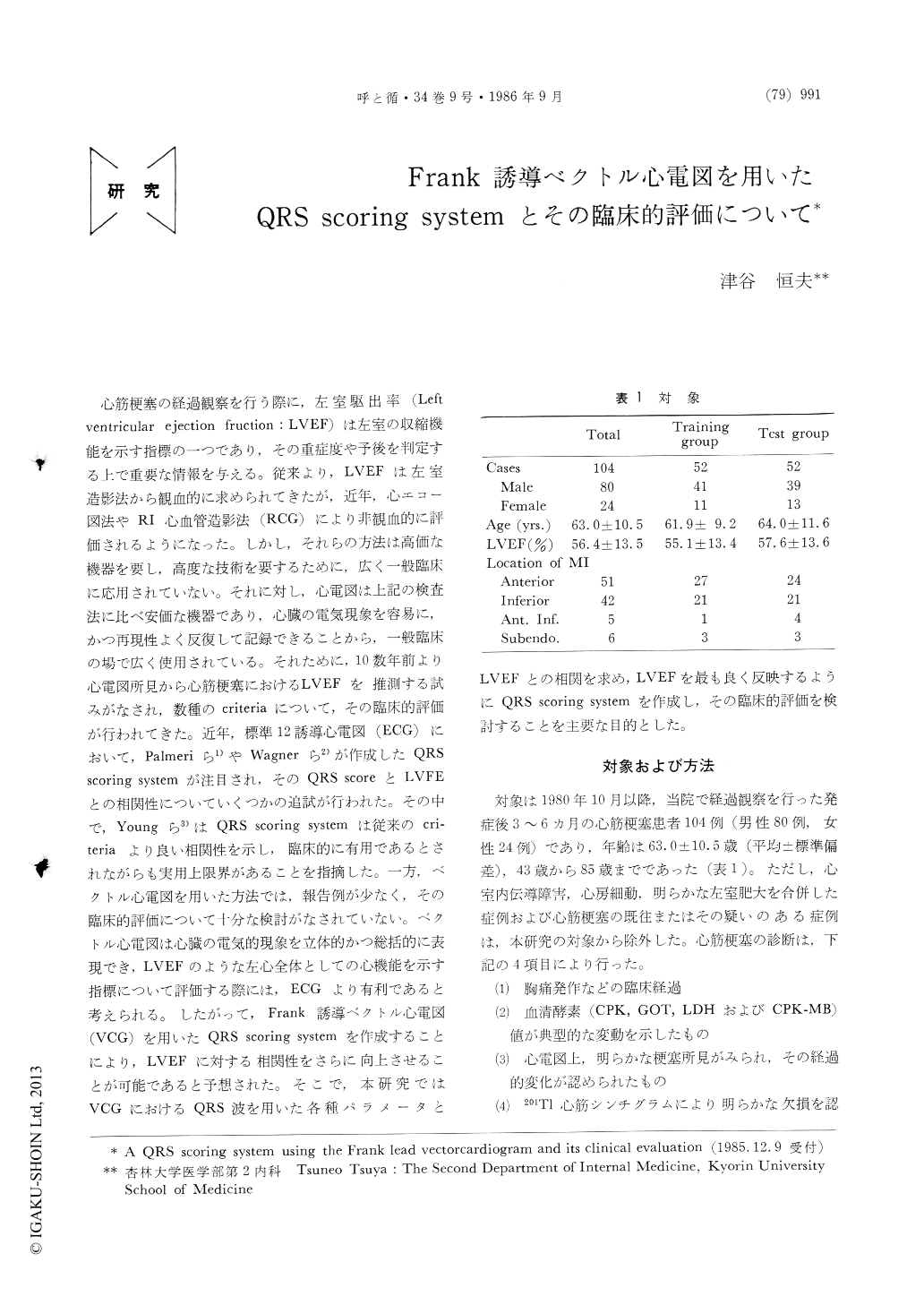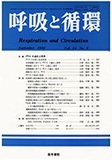Japanese
English
- 有料閲覧
- Abstract 文献概要
- 1ページ目 Look Inside
心筋梗塞の経過観察を行う際に,左室駆出率(Leftventricular ejection fruction:LVEF)は左室の収縮機能を示す指標の一つであり,その重症度や予後を判定する上で重要な情報を与える。従来より,LVEFは左室造影法から観血的に求められてきたが,近年,心エコー図法やRI心血管造影法(RCG)により非観血的に評価されるようになった。しかし,それらの方法は高価な機器を要し,高度な技術を要するために,広く一般臨床に応用されていない。それに対し,心電図は上記の検査法に比べ安価な機器であり,心臓の電気現象を容易に,かつ再現性よく反復して記録できることから,一般臨床の場で広く使用されている。それために,10数年前より心電図所見から心筋梗塞におけるLVEFを推測する試みがなされ,数種のcriteriaについて,その臨床的評価が行われてきた。近年,標準12誘導心電図(ECG)において,Palmeriら1)やWagnerら2)が作成したQRSscoring systemが注目され,そのQRS scoreとLVFEとの相関性についていくつかの追試が行われた。その中で,Youngら3)はQRS scoring systemは従来のcri—teriaより良い相関性を示し,臨床的に有用であるとされながらも実用上限界があることを指摘した。一方ベクトル心電図を用いた方法では,報告例が少なく,その臨床的評価について十分な検討がなされていない。ベクトル心電図は心臓の電気的現象を立体的かつ総括的に表現でき,LVEFのような左心全体としての心機能を示す指標について評価する際には,ECGより有利であると考えられる。したがって,Frank誘導ベクトル心電図(VCG)を用いたQRS scoring systemを作成することにより,LVEFに対する相関性をさらに向上させることが可能であると予想された。そこで,本研究ではVCGにおけるQRS波を眉いた各種パラメータとLVEFとの相関を求め,LVEFを最も良く反映するようにQRS scoring systemを作成し,その臨床的評価を検討することを主要な目的とした。
In following myocardial infarction (MI), a QRS scoring system using the standard 12-lead electrocardio-gram (the ECG scoring system) is used as a method of estimating the left ventricular ejection fraction (LVEF). While this system may have its clinical usefu-lness, however, it does not show sufficiently high correla-tion with the LVEF, and so there is a limit to its practical utility.
The purpose of this study was therefore to try to improve the correlation with the LVEF by designing a QRS scoring system using the Frank lead vectorcardio-gram (a VCG scoring system), and to evaluate it clinically. In this VCG scoring system, for each lead the Q-R-S wave height, the R/S ratio, the Q/R ratio, the width of Q wave, and the Q-index were assigned points as parameters, and their sum total became the VCG score.
The subjects were 104 patients with MI, 3 to 6 months after they showed their first symptoms. The VCG scoring system showed good correlation with the LVEF, and moreover reproducibility was verified (r=-0.76, p< 0.001, [LVEF%]=70.5-3.1×[VCG score]). Furthe-rmore, a high standard for detecting abnormalities in the LVEF was achieved, with a VCG score≧7: sensiti-vity, specificity and predictive accuracy were 57.1%, 93.5% and 78.8%, respectively.
In the 96 cases for which the ECG and VCG were recorded simultaneously, the VCG score showed better correlation than the ECG score with the LVEF (r= -0.76 vs. r=-0.56). Therefore, it can be considered that the VCG scoring system is a useful method of esti-mating the LVEF from an electrocardiogram.

Copyright © 1986, Igaku-Shoin Ltd. All rights reserved.


